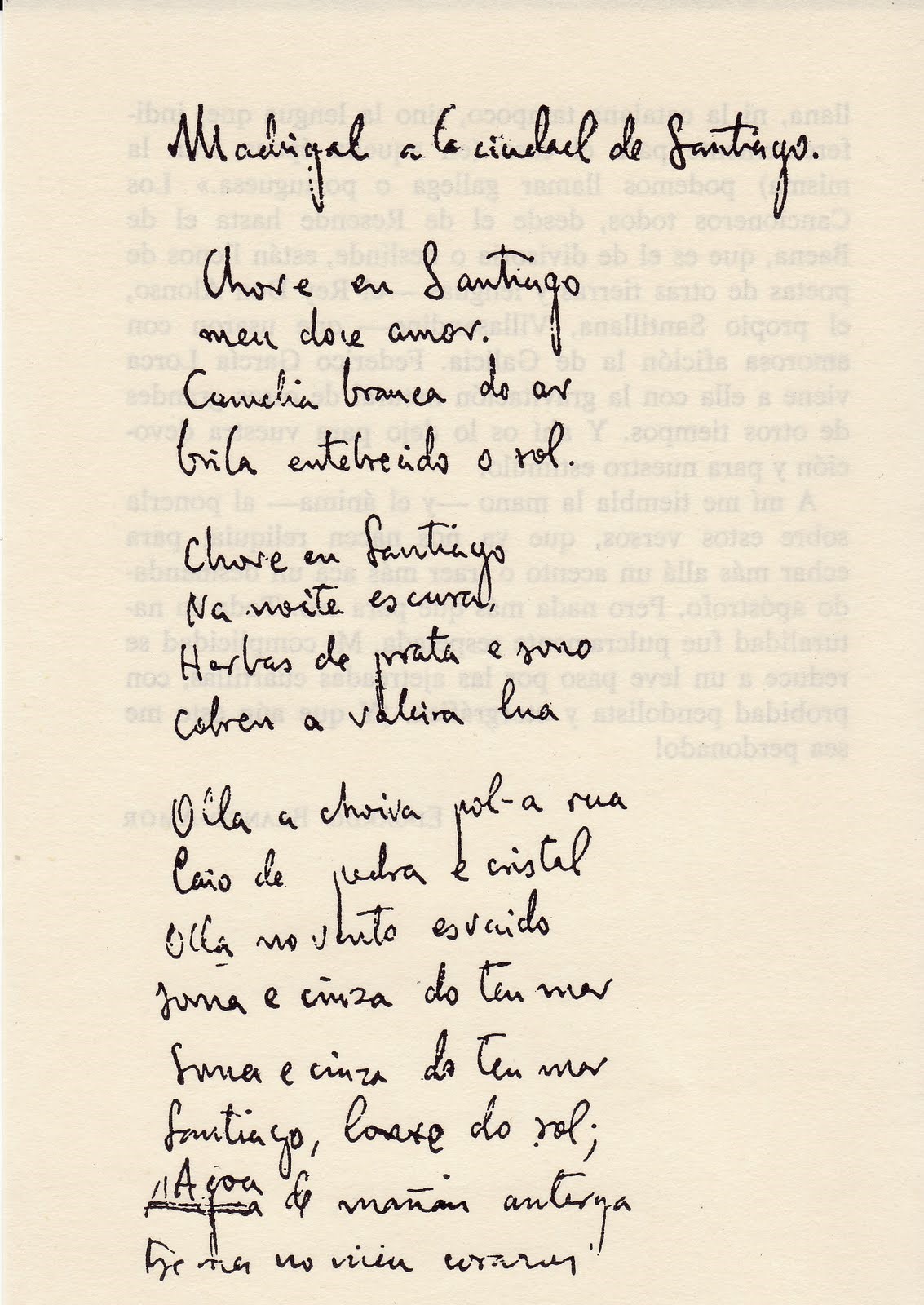Between March and May 1932, Lorca gave a series of speeches throughout the country, mostly under the organization of the Committees for Intellectual Cooperation of the Republic. He was in Vigo (Arquitectura del cante jondo (Deep Song Architecture), on March 27), in Santiago de Compostela (conference-recital on New York, on May 7), and in La Coruña (Architecture…, on May 8)…
It was a great satisfaction for him to visit Galicia again (he had been there in 1916 with his teacher Domínguez Berrueta), he had never forgotten that landscape and had incorporated into his repertoire many Galician songs from the Galician-Portuguese Songbooks of the 12th, 13th and 14th centuries.
His friendship with Ernesto Guerra da Cal was fundamental. When Federico made this trip to Galicia, he was imbued with everything that Ernesto, who lived in Madrid, had told him. On this trip he began to devise his poems in Galician. In fact, fascinated by the cathedral square, and by the fact of knowing that it was once a cemetery, he wrote Danza da lúa en Santiago (Dance of the Moon in Santiago). He gave the manuscript to Carlos Martínez Barbeito (lost).
On his return to Madrid, he read the manuscript to Guerra da Cal and the idea of collaborating to make a book of poems in Galician arose. Therefore, in the summer of 1932 Madrigal â cibdá de Santiagowas published. Returning that summer to Galicia with La Barraca he recited it and left everyone surprised. He submitted it for publication to a magazine and that was when the myth about his ability to conceive poems in Galician began, although the truth is that he had the help of Guerra da Cal. In a couple of years, they were to have another five compositions. And on December 27, 1935, it was printed in Santiago de Compostela.
